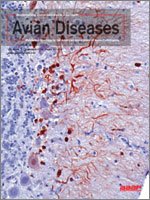We investigated the plausibility of aerosol transmission of H5N2 highly pathogenic avian influenza (HPAI) virus during the 2015 spring outbreaks that occurred in the U.S. midwest. Air samples were collected inside and outside of infected turkey and layer facilities. Samples were tested to assess HPAI virus concentration (RNA copies/m3 of air), virus viability, and virus distribution by particle size. HPAI virus RNA was detected inside and up to 1000 m from infected facilities. HPAI virus was isolated from air samples collected inside, immediately outside, up to 70 m from infected facilities, and in aerosol particles larger than 2.1 μm. Direct exposure to exhausted aerosols proved to be a significant source of environmental contamination. These findings demonstrate HPAI virus aerosolization from infected flocks, and that both the transport of infectious aerosolized particles and the deposition of particles on surfaces around infected premises represent a potential risk for the spread of HPAI.
How to translate text using browser tools
20 May 2016
Investigation into the Airborne Dissemination of H5N2 Highly Pathogenic Avian Influenza Virus During the 2015 Spring Outbreaks in the Midwestern United States
Montserrat Torremorell,
Carmen Alonso,
Peter R. Davies,
Peter C. Raynor,
Devi Patnayak,
Mia Torchetti,
Brian McCluskey
ACCESS THE FULL ARTICLE

Avian Diseases
Vol. 60 • No. 3
September 2016
Vol. 60 • No. 3
September 2016
airborne transmission
avian influenza
HPAI
Particle size




